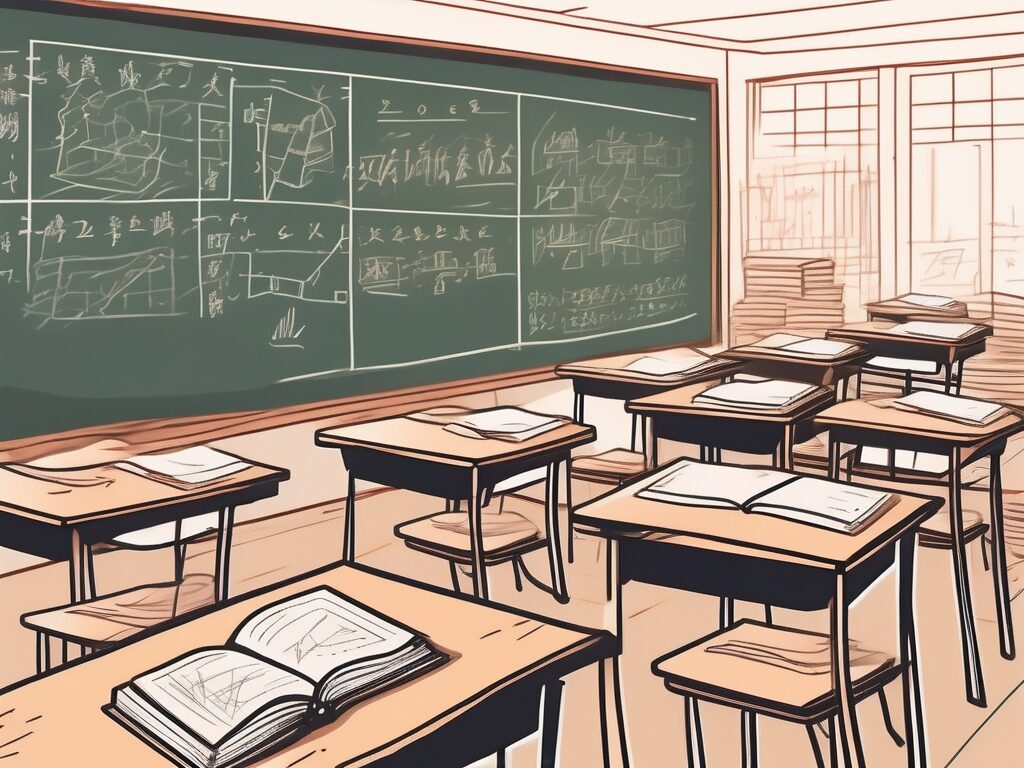In the global landscape, China’s education system is a force to be reckoned with. It’s a system that has produced students who consistently outperform their peers in international assessments. However, like any other system, it is not without its challenges. In this comprehensive exploration, we’ll delve into the complexities and challenges that China’s education system faces, from the pressures of the Gaokao to the rural-urban education divide.
The Gaokao Pressure
The Gaokao, China’s national university entrance exam, is a major milestone in any Chinese student’s life. The results of this single exam can determine a student’s future career and social status. However, the immense pressure associated with this exam is a significant challenge in China’s education system.
Imagine the pressure of your A-levels, but magnified to an almost unbearable level. That’s the Gaokao for you. The exam is so high-stakes that it’s not uncommon for students to spend their entire high school years, and sometimes even earlier, preparing for it. This intense focus on a single exam can lead to excessive stress and mental health issues among students.
Furthermore, the Gaokao’s format encourages rote learning rather than critical thinking. Students are often more focused on memorising facts and figures than understanding concepts. This approach to learning can limit students’ creativity and problem-solving skills, which are crucial in today’s rapidly changing world.
The Rural-Urban Education Divide
Another significant challenge faced by China’s education system is the rural-urban divide. The quality of education a child receives in China can greatly depend on where they live. In big cities like Beijing and Shanghai, students have access to high-quality education with well-equipped facilities and highly qualified teachers. However, the story is quite different in rural areas.
Think of it as the difference between attending a top-tier school in London compared to a small village school in the countryside. The disparity is stark. Rural schools often lack resources, and the quality of teaching can vary greatly. This inequality in education opportunities can perpetuate social inequality, as students from rural areas may find it harder to compete with their urban peers, particularly in high-stakes exams like the Gaokao.
Furthermore, the rural-urban divide is exacerbated by the hukou system, a household registration policy that restricts rural students from attending urban schools. This policy further limits the educational opportunities available to rural students.
Teacher Shortages and Quality
China’s education system also grapples with teacher shortages, particularly in rural areas. The profession is often seen as less desirable due to low pay and high workloads, leading to a lack of qualified teachers in the country.
Imagine being a teacher in a class of 50 or more students, with limited resources and support. It’s a daunting task, isn’t it? This is the reality for many teachers in China, particularly in rural areas. The high student-to-teacher ratio can affect the quality of education, as teachers may not have the time or resources to give each student the attention they need.
Moreover, the quality of teacher training can also be inconsistent. While there are high-quality teacher training programmes in China, not all teachers have access to these. This inconsistency can lead to a variation in teaching quality across the country.
Curriculum and Pedagogy
The Chinese education system’s curriculum and pedagogy are also areas of challenge. The current curriculum is often criticised for being too rigid and exam-focused, leaving little room for creativity and independent thinking.
Imagine studying for your GCSEs or A-levels, but with a curriculum that’s heavily focused on rote learning and memorisation. It’s a bit like trying to fit a square peg into a round hole, isn’t it? This approach to learning can stifle students’ creativity and limit their ability to think critically and solve problems.
Moreover, the pedagogy, or the method and practice of teaching, in China is often teacher-centred rather than student-centred. This means that teachers are often the main source of knowledge, with students expected to passively receive information. This approach can limit students’ engagement and active participation in their learning.
Conclusion
Despite its successes, China’s education system faces significant challenges. From the pressures of the Gaokao and the rural-urban divide to teacher shortages and a rigid curriculum, these issues highlight the complexities of education in China. Addressing these challenges will be crucial in ensuring that all students in China have the opportunity to receive a high-quality education.
However, it’s important to remember that every education system, whether it’s in the UK, the US, or China, has its own unique set of challenges. What’s crucial is the continuous effort to address these challenges and improve the system for the benefit of all students.
Empower Your Teaching Career with IPGCE
As we navigate the complexities of China’s education system, it’s clear that professional development is key to overcoming these challenges. IPGCE is dedicated to supporting educators in their quest for excellence. Whether you’re facing qualification barriers, seeking career progression, combating professional isolation, or aiming to master global education systems, our International Postgraduate Certificate in Education is your gateway to success. With IPGCE, you’re not just enhancing your credentials; you’re unlocking a world of opportunities. Experience a 50% increase in interview callbacks, a 45% boost in promotion rates, and join a thriving global network of educators. Don’t let the challenges hold you back. Join the UK’s #1 Teacher Training Course today and transform your educational impact.

